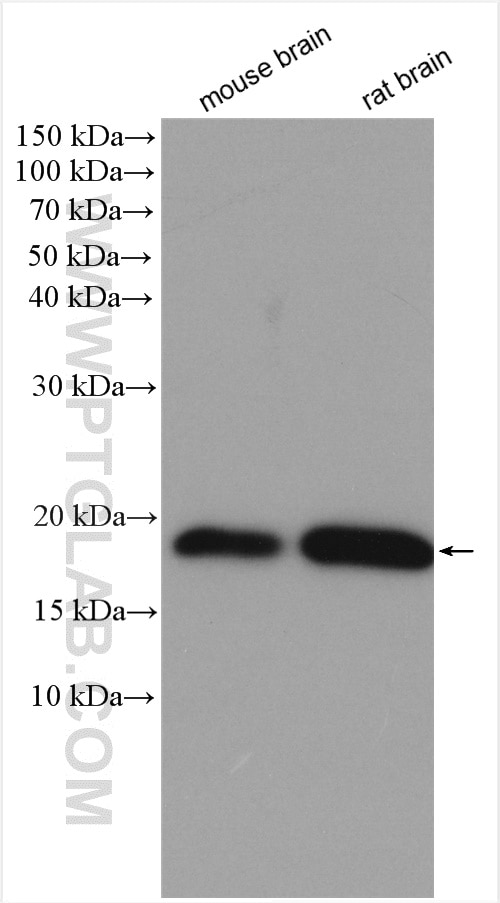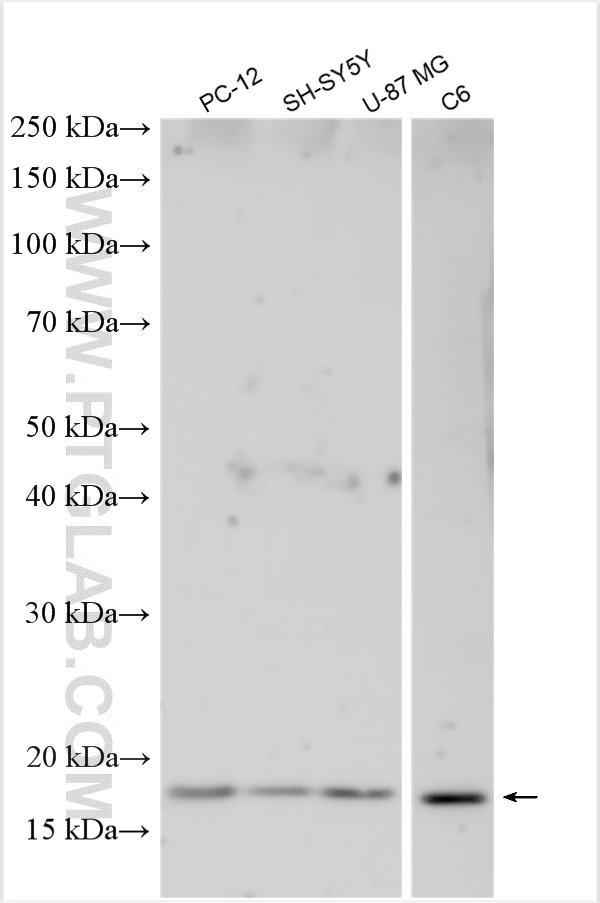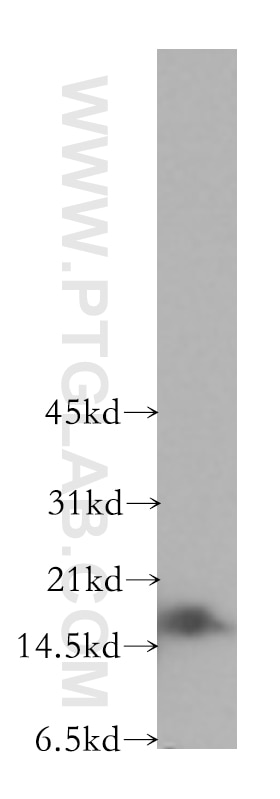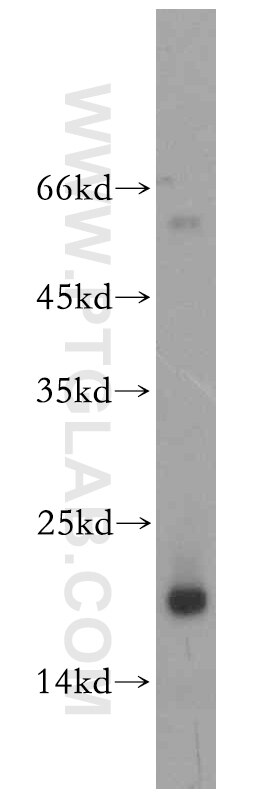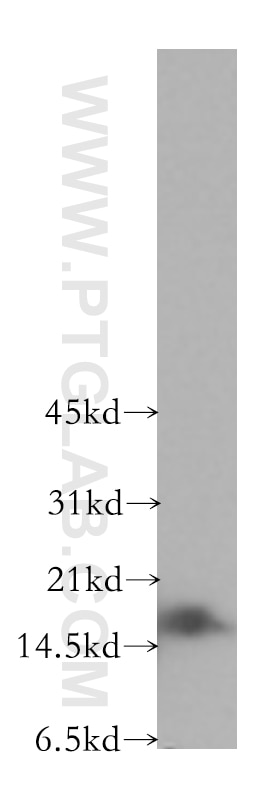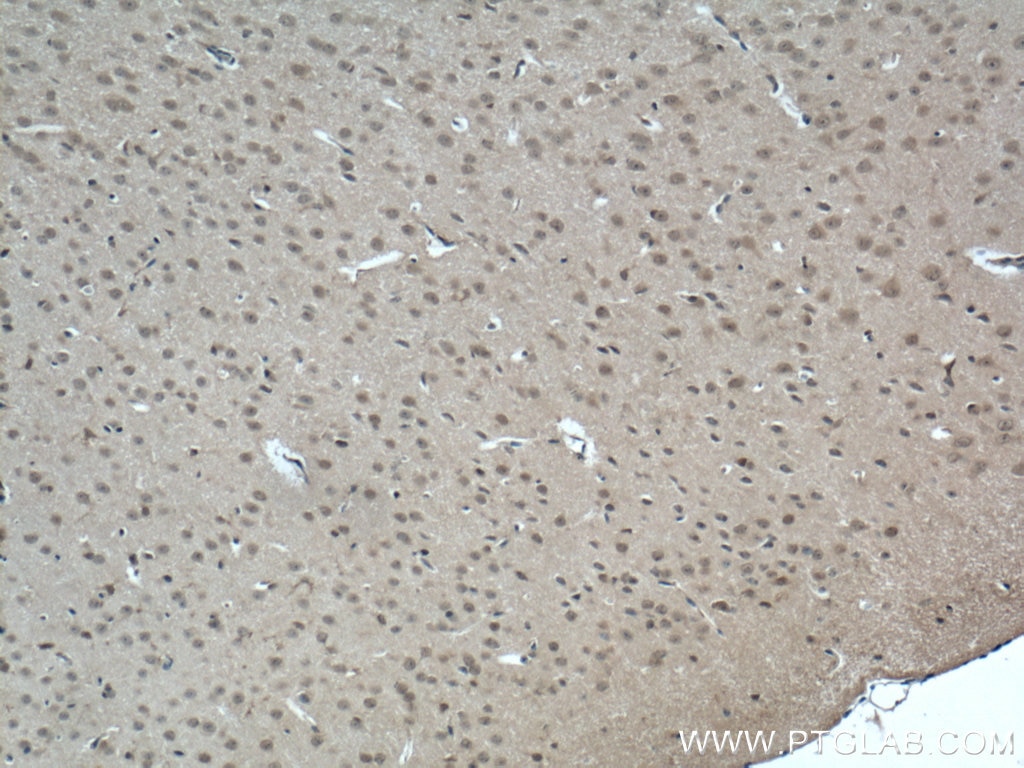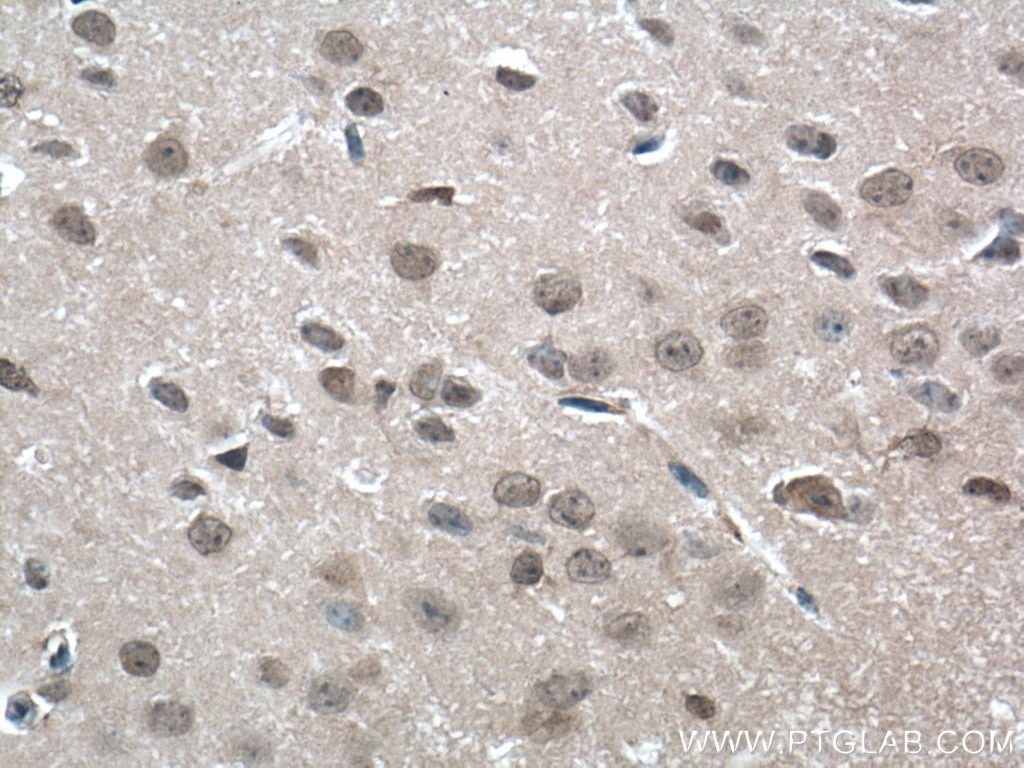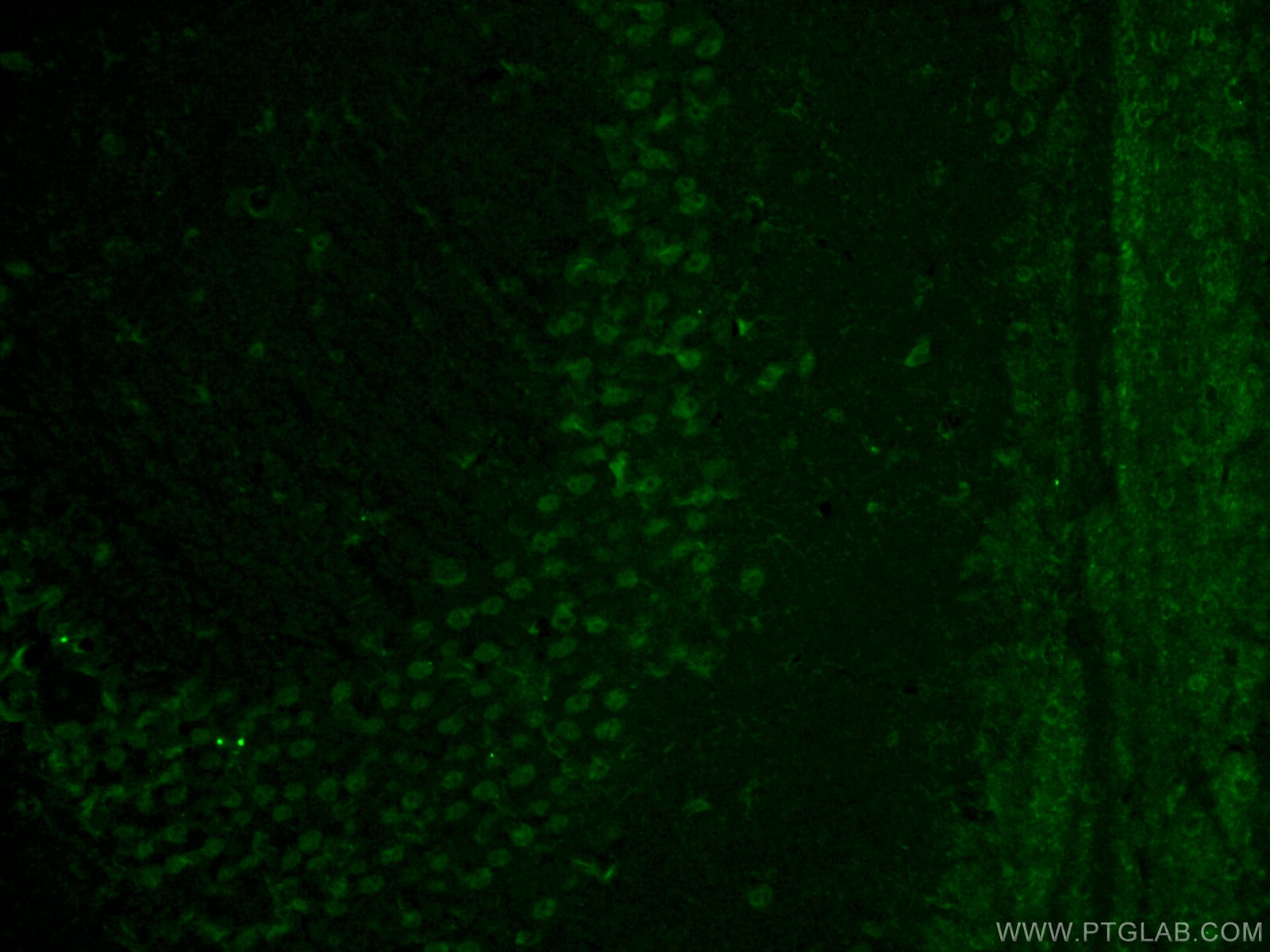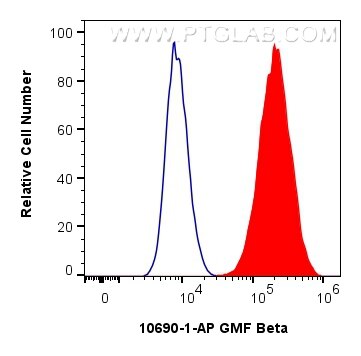- Phare
- Validé par KD/KO
Anticorps Polyclonal de lapin anti-GMF Beta
GMF Beta Polyclonal Antibody for WB, IHC, IF-P, FC (Intra), ELISA
Hôte / Isotype
Lapin / IgG
Réactivité testée
Humain, rat, souris et plus (1)
Applications
WB, IHC, IF-P, FC (Intra), ELISA
Conjugaison
Non conjugué
N° de cat : 10690-1-AP
Synonymes
Galerie de données de validation
Applications testées
| Résultats positifs en WB | tissu cérébral de souris, cellules MG U-87, cellules PC-12, cellules SH-SY5Y, tissu cardiaque de souris, tissu cardiaque humain, tissu cérébral de rat, tissu cérébral humain |
| Résultats positifs en IHC | tissu cérébral de souris, il est suggéré de démasquer l'antigène avec un tampon de TE buffer pH 9.0; (*) À défaut, 'le démasquage de l'antigène peut être 'effectué avec un tampon citrate pH 6,0. |
| Résultats positifs en IF-P | tissu cérébral de souris, |
| Résultats positifs en FC (Intra) | cellules MG U-87 |
Dilution recommandée
| Application | Dilution |
|---|---|
| Western Blot (WB) | WB : 1:2000-1:10000 |
| Immunohistochimie (IHC) | IHC : 1:50-1:500 |
| Immunofluorescence (IF)-P | IF-P : 1:50-1:500 |
| Flow Cytometry (FC) (INTRA) | FC (INTRA) : 0.80 ug per 10^6 cells in a 100 µl suspension |
| It is recommended that this reagent should be titrated in each testing system to obtain optimal results. | |
| Sample-dependent, check data in validation data gallery | |
Applications publiées
| KD/KO | See 1 publications below |
| WB | See 9 publications below |
| IHC | See 4 publications below |
| IF | See 6 publications below |
Informations sur le produit
10690-1-AP cible GMF Beta dans les applications de WB, IHC, IF-P, FC (Intra), ELISA et montre une réactivité avec des échantillons Humain, rat, souris
| Réactivité | Humain, rat, souris |
| Réactivité citée | rat, Humain, poisson-zèbre, souris |
| Hôte / Isotype | Lapin / IgG |
| Clonalité | Polyclonal |
| Type | Anticorps |
| Immunogène | GMF Beta Protéine recombinante Ag1104 |
| Nom complet | glia maturation factor, beta |
| Masse moléculaire calculée | 17 kDa |
| Poids moléculaire observé | 17 kDa |
| Numéro d’acquisition GenBank | BC005359 |
| Symbole du gène | GMFB |
| Identification du gène (NCBI) | 2764 |
| Conjugaison | Non conjugué |
| Forme | Liquide |
| Méthode de purification | Purification par affinité contre l'antigène |
| Tampon de stockage | PBS with 0.02% sodium azide and 50% glycerol |
| Conditions de stockage | Stocker à -20°C. Stable pendant un an après l'expédition. L'aliquotage n'est pas nécessaire pour le stockage à -20oC Les 20ul contiennent 0,1% de BSA. |
Informations générales
GMFB, Glia maturation factor beta, is a nerve growth factor implicated in nervous system development. It was reported that GMF-beta promotes the phenotypic expression of glia and neurons and inhibits the proliferation of their respective tumors in culture cells. GMF-beta protein is specific to the brain where it is expressed in glial cells (mainly astrocytes) and insome neurons. Higher levels of GMFB were found in the central nervous system, except for the spinal cord, and in thymus and colon. GMFB was positive in the cytoplasm and nuclei of all cells in whole brain.
Protocole
| Product Specific Protocols | |
|---|---|
| WB protocol for GMF Beta antibody 10690-1-AP | Download protocol |
| IHC protocol for GMF Beta antibody 10690-1-AP | Download protocol |
| IF protocol for GMF Beta antibody 10690-1-AP | Download protocol |
| Standard Protocols | |
|---|---|
| Click here to view our Standard Protocols |
Publications
| Species | Application | Title |
|---|---|---|
Int J Biol Macromol SUMOylation of GMFB regulates its stability and function in retinal pigment epithelial cells under hyperglycemia | ||
Development Coronary veins determine the pattern of sympathetic innervation in the developing heart. | ||
Int J Mol Sci Parkinson's Disease Dementia Patients: Expression of Glia Maturation Factor in the Brain | ||
Eur J Cancer Identification of glia maturation factor beta as an independent prognostic predictor for serous ovarian cancer. | ||
Front Oncol Glia Maturation Factor Beta as a Novel Biomarker and Therapeutic Target for Hepatocellular Carcinoma. | ||
Front Oncol Glia Maturation Factor β as a Novel Independent Prognostic Biomarker and Potential Therapeutic Target of Kidney Renal Clear Cell Carcinoma. |
